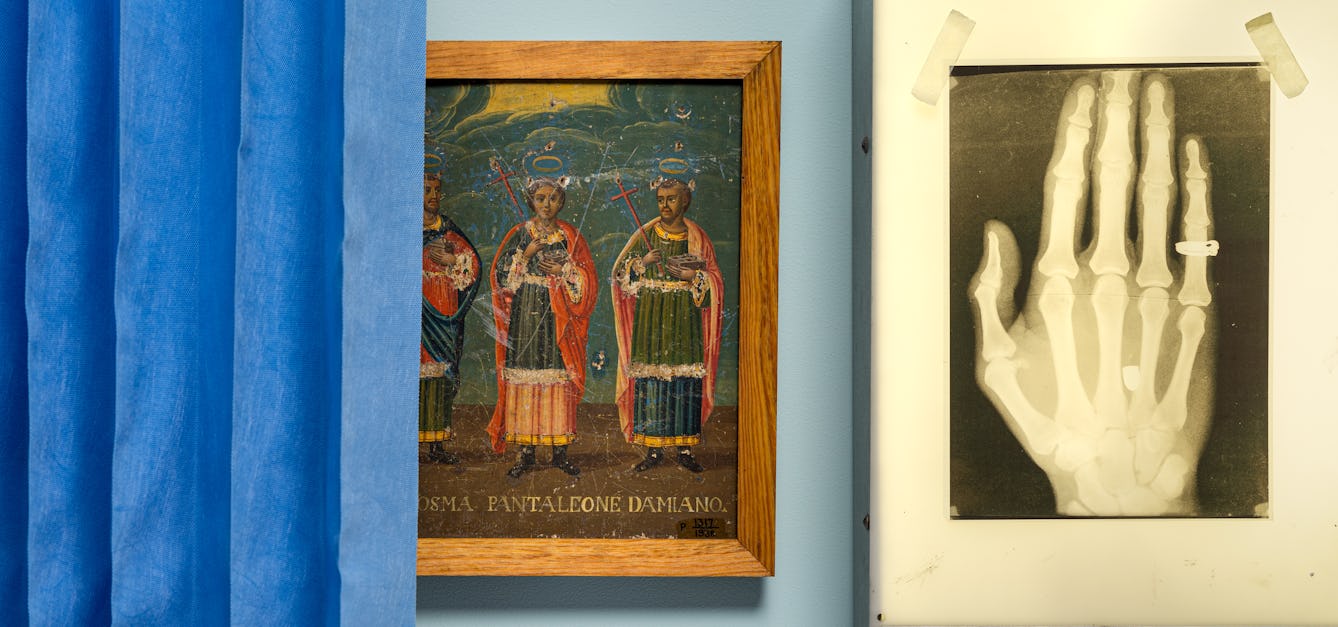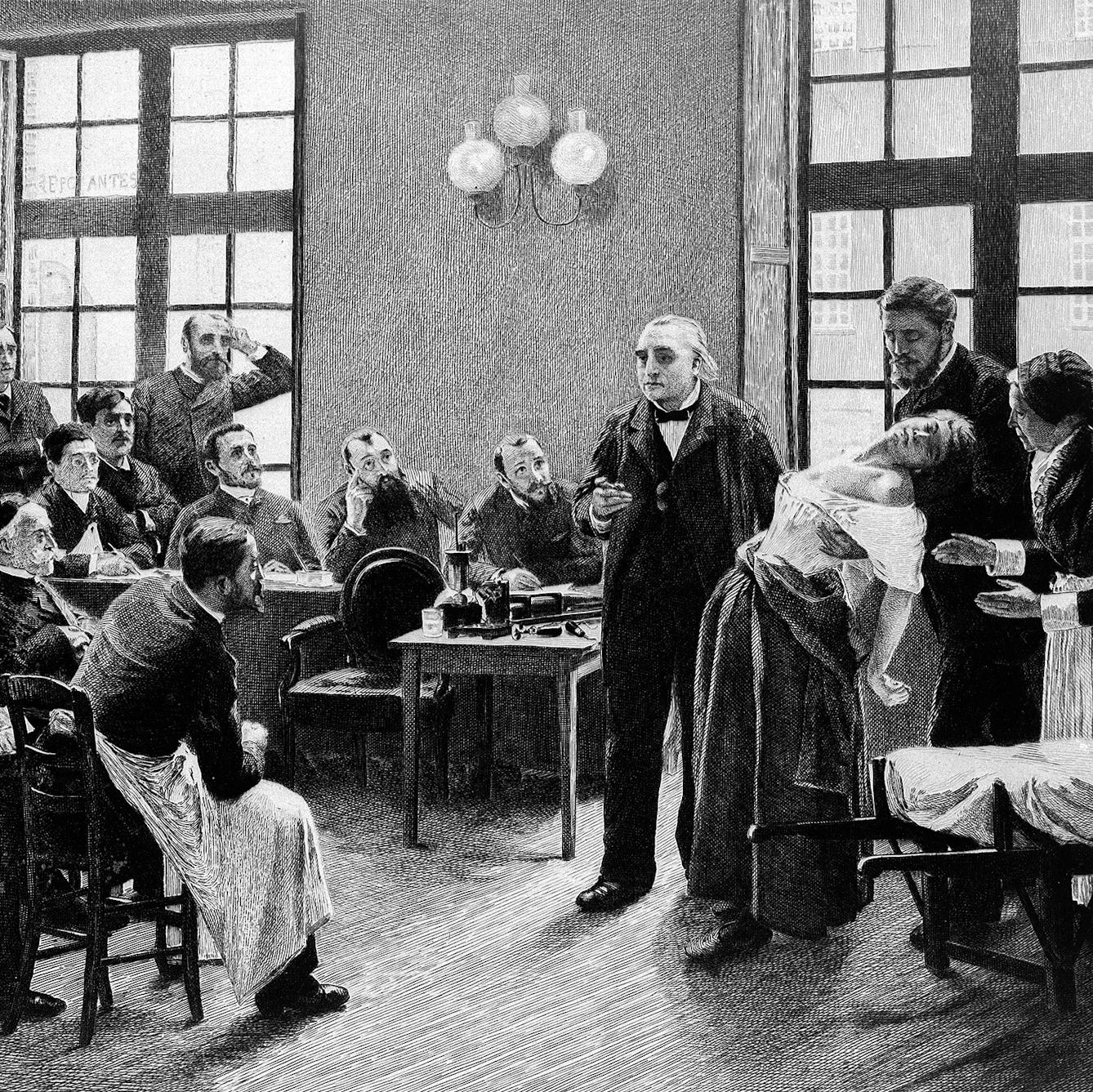Stories

- Article
The ancient doctors who refused payment
The NHS might only be 70 years old, but the idea of free healthcare goes back to Ancient Greece, when devout doctors provided their services without charge.

- In pictures
The grape cure
When we bring someone in hospital a bunch of grapes, we don't expect the grapes to work a miraculous cure upon them. But throughout history, wondrous healing powers have been attributed to the humble grape.

- Article
How to be poor and happy
Money, security, self-sufficiency and charitable giving have long been linked to happiness. But what if you’re working class?

- Article
What is hysteria?
Hysteria has long been associated with fanciful myths, but its history reveals how it has been used to control women’s behaviour and bodies
Catalogue
- Books
Ancient Greece and the healing art / [Douglas Guthrie].
Guthrie, Douglas, 1885-1975.Date: 1963- Books
Ancient Greece, modern psyche : archetypes evolving / edited by Virginia Beane Rutter and Thomas Singer.
Date: 2015- Books
Ancient Greece from the air / Raymond V. Schoder ; with 140 colour photos. by the author, 138 ground plans and 1 map.
Schoder, Raymond V., 1916-1987.Date: [1974]- E-books
- Online
Body, Dress, and Identity in Ancient Greece
Mireille M. LeeDate: [2015]- E-books
- Online
Sex and Difference in Ancient Greece and Rome
GoldenDate: [2003]
![Paeonia officinalis L. Paeoniaceae, European Peony, Distribution: Europe. The peony commemorates Paeon, physician to the Gods of ancient Greece (Homer’s Iliad v. 401 and 899, circa 800 BC). Paeon, came to be associated as being Apollo, Greek god of healing, poetry, the sun and much else, and father of Aesculapius/Asclepias. Theophrastus (circa 300 BC), repeated by Pliny, wrote that if a woodpecker saw one collecting peony seed during the day, it would peck out one’s eyes, and (like mandrake) the roots had to be pulled up at night by tying them to the tail of a dog, and one’s ‘fundament might fall out’ [anal prolapse] if one cut the roots with a knife. Theophrastus commented ‘all this, however, I take to be so much fiction, most frivolously invented to puff up their supposed marvellous properties’. Dioscorides (70 AD, tr. Beck, 2003) wrote that 15 of its black seeds, drunk with wine, were good for nightmares, uterine suffocation and uterine pains. Officinalis indicates it was used in the offices, ie the clinics, of the monks in the medieval era. The roots, hung round the neck, were regarded as a cure for epilepsy for nearly two thousand years, and while Galen would have used P. officinalis, Parkinson (1640) recommends the male peony (P. mascula) for this. He also recommends drinking a decoction of the roots. Elizabeth Blackwell’s A Curious Herbal (1737), published by the College of Physicians, explains that it was used to cure febrile fits in children, associated with teething. Although she does not mention it, these stop whatever one does. Parkinson also reports that the seeds are used for snake bite, uterine bleeding, people who have lost the power of speech, nightmares and melancholy. Photographed in the Medicinal Garden of the Royal College of Physicians, London.](https://iiif.wellcomecollection.org/image/B0009095/full/282%2C/0/default.jpg)
![Paeonia officinalis L. Paeoniaceae, European Peony, Distribution: Europe. The peony commemorates Paeon, physician to the Gods of ancient Greece (Homer’s Iliad v. 401 and 899, circa 800 BC). Paeon, came to be associated as being Apollo, Greek god of healing, poetry, the sun and much else, and father of Aesculapius/Asclepias. Theophrastus (circa 300 BC), repeated by Pliny, wrote that if a woodpecker saw one collecting peony seed during the day, it would peck out one’s eyes, and (like mandrake) the roots had to be pulled up at night by tying them to the tail of a dog, and one’s ‘fundament might fall out’ [anal prolapse] if one cut the roots with a knife. Theophrastus commented ‘all this, however, I take to be so much fiction, most frivolously invented to puff up their supposed marvellous properties’. Dioscorides (70 AD, tr. Beck, 2003) wrote that 15 of its black seeds, drunk with wine, were good for nightmares, uterine suffocation and uterine pains. Officinalis indicates it was used in the offices, ie the clinics, of the monks in the medieval era. The roots, hung round the neck, were regarded as a cure for epilepsy for nearly two thousand years, and while Galen would have used P. officinalis, Parkinson (1640) recommends the male peony (P. mascula) for this. He also recommends drinking a decoction of the roots. Elizabeth Blackwell’s A Curious Herbal (1737), published by the College of Physicians, explains that it was used to cure febrile fits in children, associated with teething. Although she does not mention it, these stop whatever one does. Parkinson also reports that the seeds are used for snake bite, uterine bleeding, people who have lost the power of speech, nightmares and melancholy. Photographed in the Medicinal Garden of the Royal College of Physicians, London.](https://iiif.wellcomecollection.org/image/B0009094/full/600%2C/0/default.jpg)







